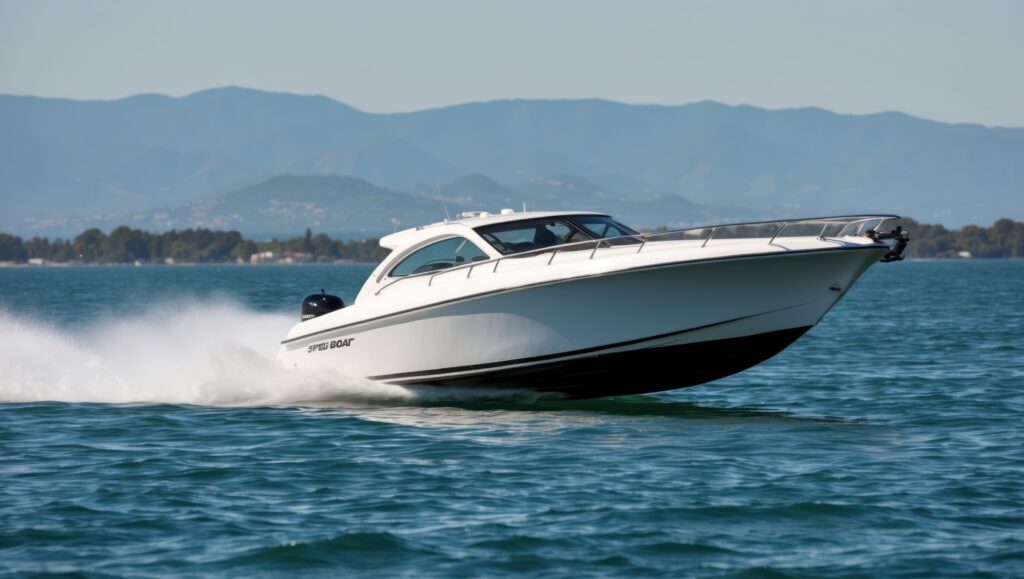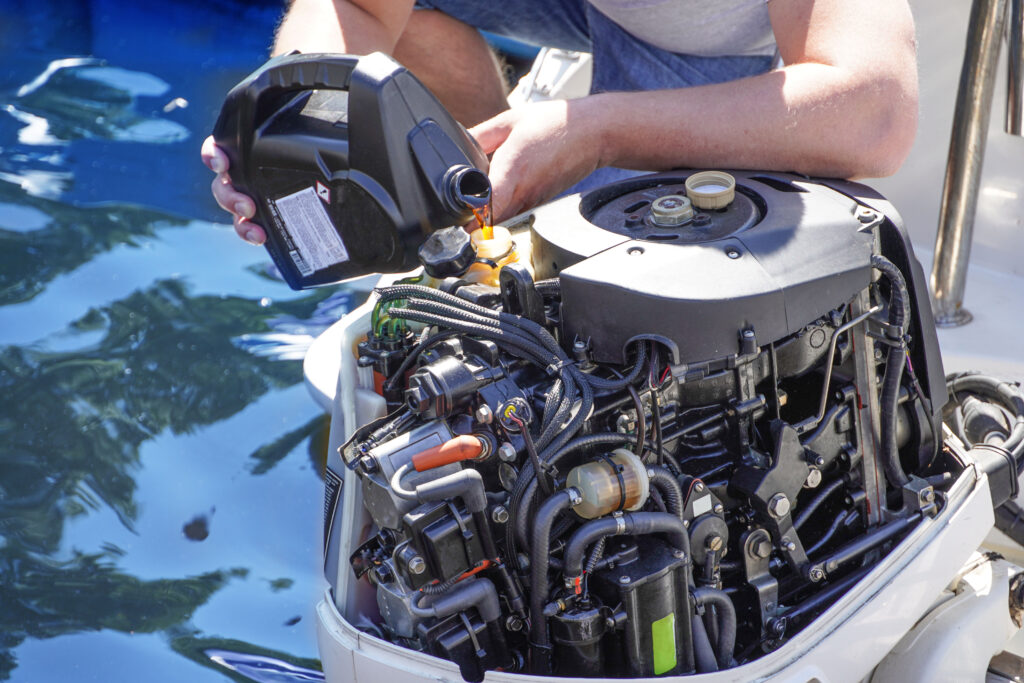The Need for Special Lubrication in Marine Engines
Marine engines operate under some of the most demanding conditions. Whether you’re cruising at speed or trolling at low power, these engines consistently run at higher revolutions per minute than typical automotive engines. This constant workload, combined with long periods of idling and exposure to moisture, puts tremendous stress on the internal components.
Because of this, marine engines require specialized lubricants formulated to handle their unique operating environments. The right marine motor oil not only protects against wear and corrosion but also ensures smooth performance and reliability over time.
In this guide, we’ll explain how to select the best marine motor oil for your boat and how to meet the lubrication needs of these highly specialized engines.
Choosing a High-Quality Marine Lubricant

The first and most important factor in selecting a marine lubricant is quality. While many oils provide basic friction protection, not all are built to handle the extreme temperatures and conditions that marine engines regularly face.
Standard motor oils might offer adequate lubrication during light use, but when heat builds, loads increase, or temperatures drop, they can quickly lose their ability to protect vital engine components. Both high heat and cold conditions can weaken an oil’s viscosity and diminish its lubricating properties, leading to increased wear and reduced performance.
That’s why investing in a premium synthetic marine oil is essential. AMSOIL Synthetic Marine Oil is engineered to maintain optimal protection in all conditions, whether you’re idling in cold water or pushing your engine to full power. It resists breakdown, delivers consistent lubrication, and keeps your engine running smoothly so you can focus on what matters most: enjoying your time on the water.
What’s The Difference Between Two and Four-Stroke Engines?
Marine engines generally fall into one of two categories: two-stroke or four-stroke. Each type operates differently and, as a result, requires a unique approach to lubrication.
The main difference lies in how these engines manage their gas exchange process, the cycle of intake, compression, combustion, and exhaust. Because of this, the way oil is introduced and circulated through the engine also varies.
Two-stroke engines are lubricated by oil that mixes directly with fuel. This mixture not only powers the engine but also provides the necessary protection for internal components. There are two main types of two-stroke oils: injector-safe oils, which are automatically mixed with fuel during operation, and pre-mix oils, which are manually blended with fuel before filling the tank.
Four-stroke engines, on the other hand, have a separate lubrication system similar to what you’d find in a car. These engines use oil grades designed for sustained operation and higher performance, circulating lubricant through an oil pump and filter to protect components from friction and wear.
Knowing which type of engine you have and the correct oil it requires is key to keeping your boat running efficiently and extending its lifespan.
Two-Stroke Marine Oil: Injector Safe and Pre-Mix Options
Two-stroke marine engines rely on oil that mixes with fuel to provide both power and lubrication. There are two main types of two-stroke oil: injector-safe and pre-mix.
Injector-safe oil is added directly to the engine, where it’s automatically combined with fuel before combustion. Pre-mix oil, as the name suggests, is manually blended with fuel prior to filling the tank. Both types deliver lubrication through the fuel mixture rather than a dedicated oiling system. There’s a special dye that changes color, once the components are homogenous.
Because two-stroke engines lack a separate oil reservoir, they tend to experience faster wear compared to four-stroke designs. However, using a high-quality synthetic two-stroke oil can significantly reduce friction and extend engine life. Premium lubricants like AMSOIL Synthetic Two-Stroke Marine Oil provide superior film strength, cleaner combustion, and exceptional protection against wear, even under high heat and heavy loads.
Choosing the right oil ensures smoother operation, less smoke, and fewer maintenance issues over time. For dependable performance and lasting protection, contact Factory Direct Oil Inc. to find the most effective synthetic oil for your marine engine.
Four-Stroke Marine Oil and Choosing the Right Grade
Four-stroke marine engines require a specific oil grade to perform at their best. The correct grade depends on your engine’s design, operating conditions, and manufacturer recommendations. To find the right option for your boat, always consult your owner’s manual.
Most manufacturers provide a range of acceptable oil grades based on factors such as temperature and climate. For instance, certain viscosities perform better in colder waters, while others are formulated for high-temperature or heavy-load operation. Choosing the proper grade ensures optimal lubrication, smooth performance, and reliable protection under varying marine conditions.
It’s important to stay within the recommended oil grade range. Using the wrong viscosity or a non-approved oil can lead to excessive wear, reduced efficiency, and even premature engine failure. It can also void your manufacturer’s warranty, leaving you unprotected in the event of damage.
To keep your four-stroke engine running strong, use a high-quality marine synthetic oil that meets your manufacturer’s specifications, such as AMSOIL Synthetic Four-Stroke Marine Oil, for consistent performance and long-lasting protection.
Use a Synthetic Oil Intended for Marine Engines

It’s important to remember that not all two-stroke or four-stroke oils are created equal. While many vehicles and machines use similar engine types, marine engines operate in unique environments that demand specialized protection.
A marine-grade synthetic oil is specifically formulated to handle the challenges of constant moisture, high humidity, and prolonged exposure to saltwater. These conditions can cause corrosion and breakdown in oils not intended for marine use, leading to reduced performance and potential engine damage.
When selecting your oil, always choose one that clearly states it’s approved for marine applications. Additionally, look for oils with low aquatic toxicity, which not only protect your engine but also minimize environmental impact. Using a marine motor oil designed for sustainability ensures your boat runs efficiently while helping preserve the waters you love to explore.
The Best Synthetic Oil Change for Your Marine Watercraft
Changing the oil in your marine engine is imperative and should be done around every 100 hours, or about every 6 months, depending on how frequently you use your boat. Remember that using quality synthetic oil can prolong the lifetime of your engine and greatly improve its performance. Contact Factory Direct Oil and find the right AMSOIL products to maximize marine engine performance and reliability.
